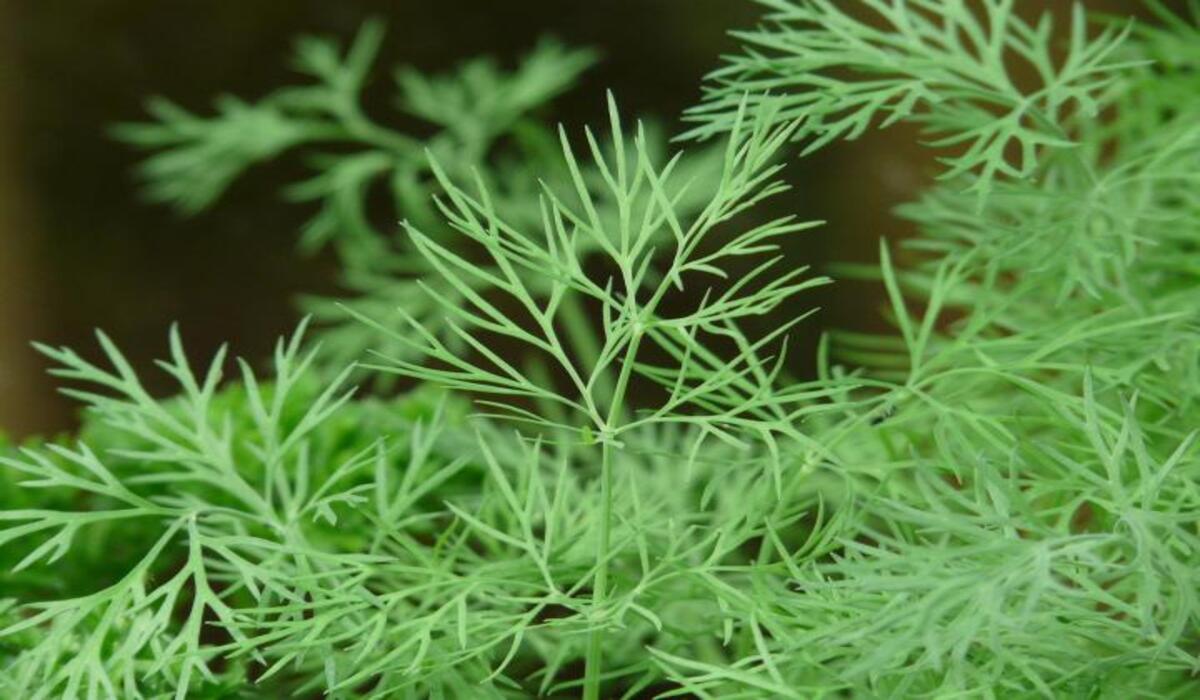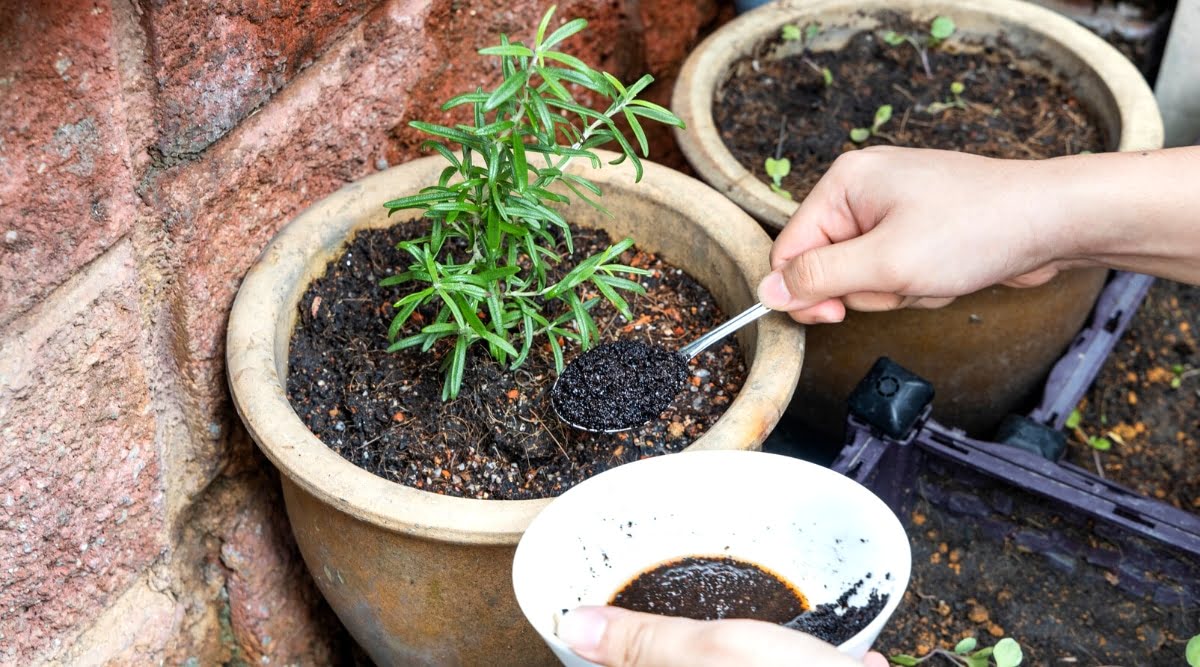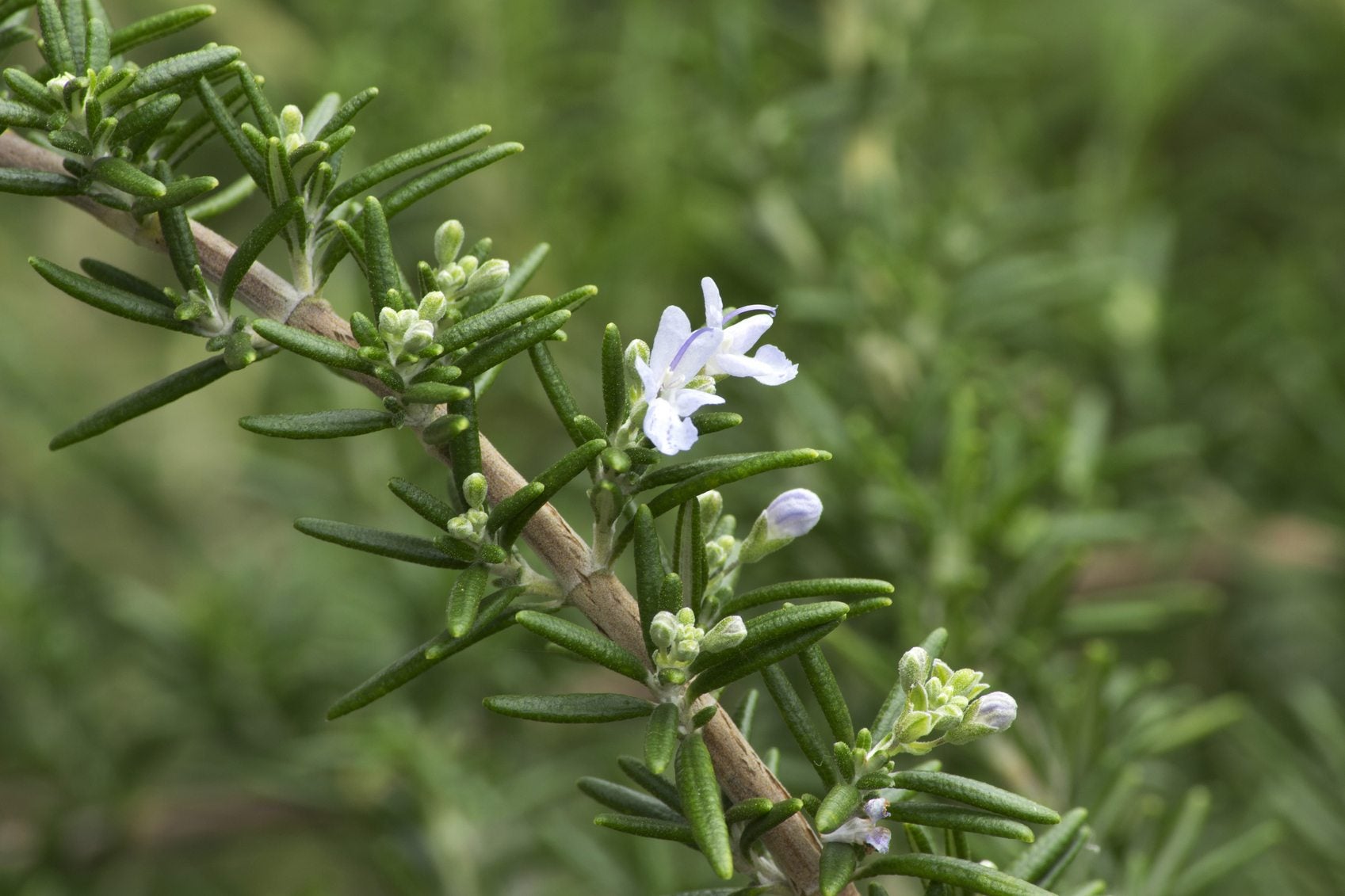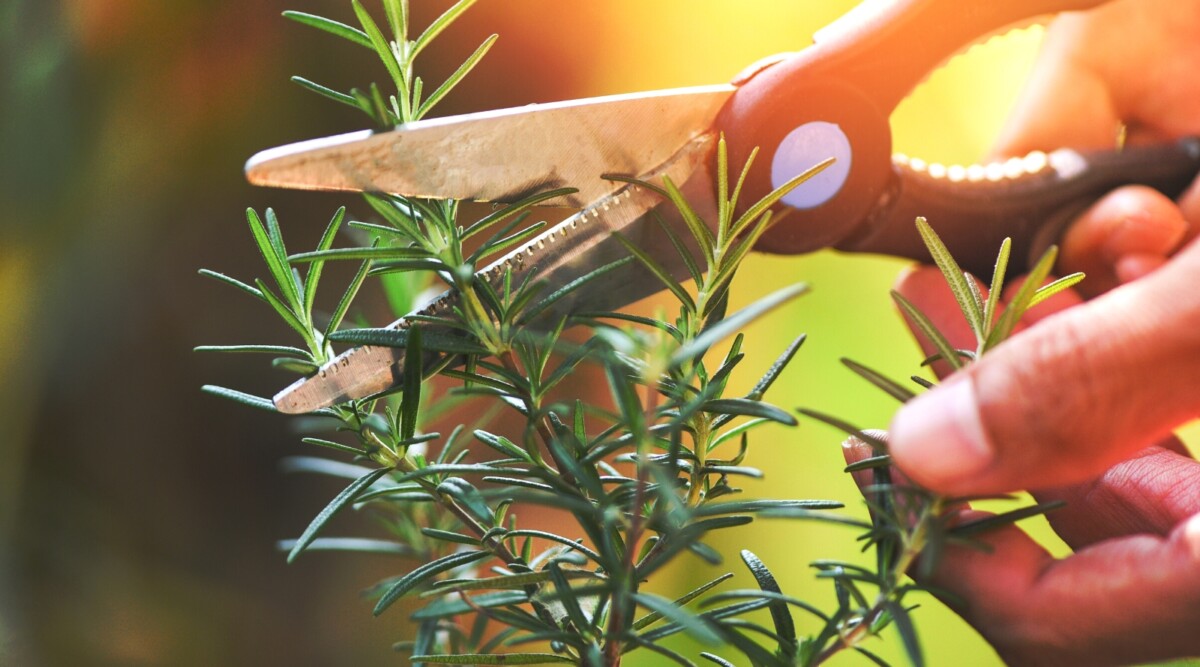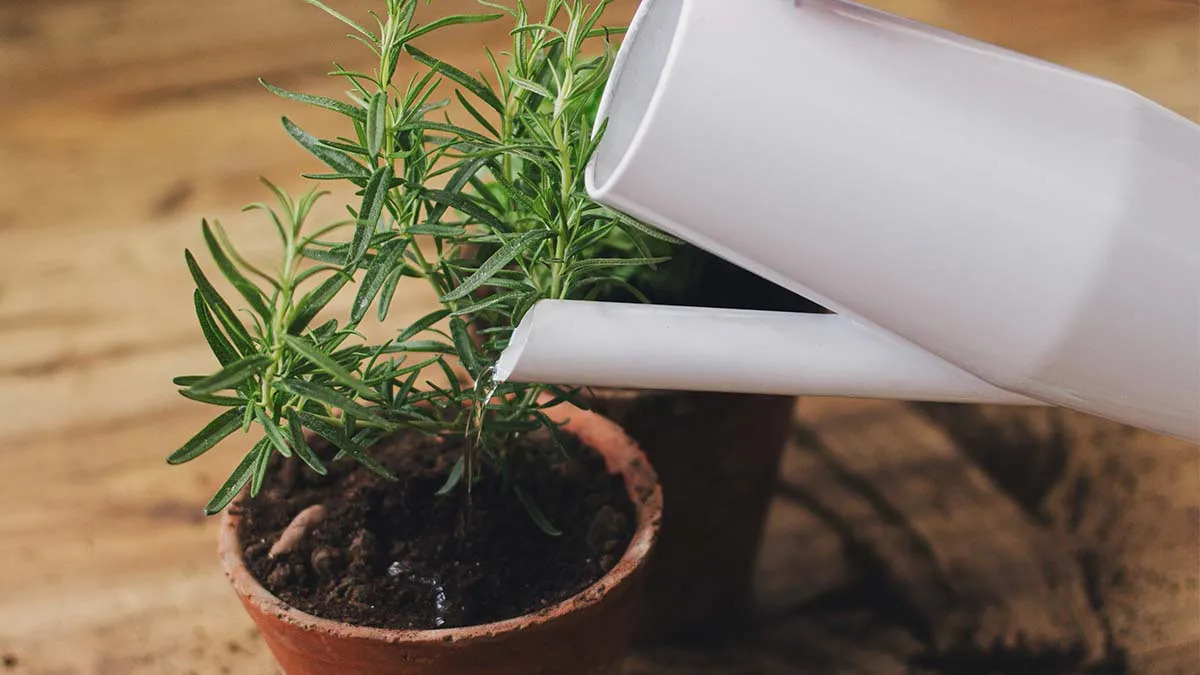Home>Gardening News and Trends>Gardening Trends>What Herbs To Plant With Rosemary
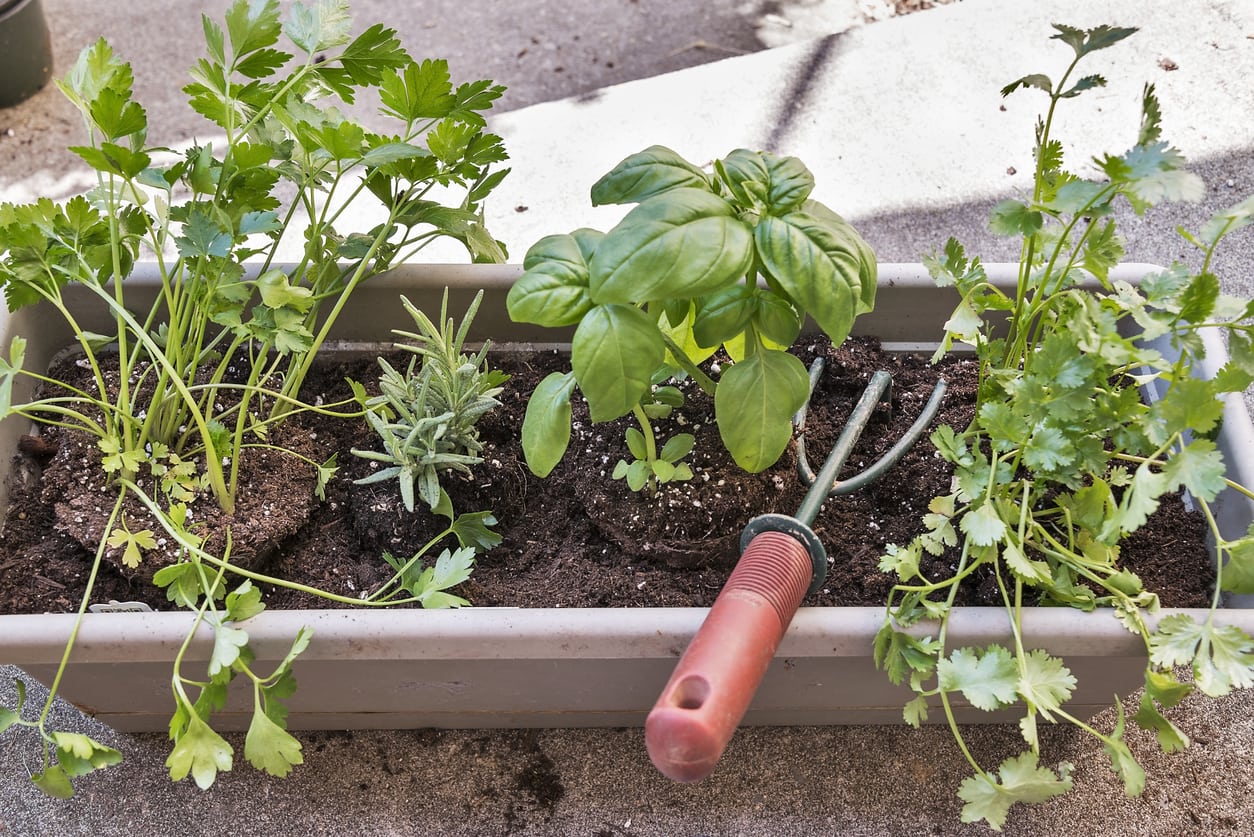

Gardening Trends
What Herbs To Plant With Rosemary
Modified: January 22, 2024
Discover the latest gardening trends and learn which herbs complement rosemary for a thriving garden. Enhance your gardening knowledge with expert tips and advice.
(Many of the links in this article redirect to a specific reviewed product. Your purchase of these products through affiliate links helps to generate commission for Chicagolandgardening.com, at no extra cost. Learn more)
Table of Contents
Introduction
Welcome to the wonderful world of gardening! Whether you are an experienced gardener or a novice with a green thumb, one thing is for sure – incorporating herbs into your garden can be a rewarding and fulfilling experience. Not only do herbs add beautiful foliage and fragrances to your garden, but they also serve a practical purpose. Companion planting is an ancient gardening technique that involves growing certain plants together for their mutual benefits. One herb that is particularly well-suited for companion planting is rosemary. In this article, we will explore the benefits of companion planting with rosemary and discover the best herbs to plant alongside it.
Rosemary, with its distinct aroma and versatile uses in the kitchen, is a delightful addition to any herb garden. But did you know that planting certain herbs alongside rosemary can actually enhance its growth and repel pests? Companion planting not only maximizes the use of space but also promotes a healthy and productive garden. By strategically pairing herbs with rosemary, you can create a harmonious and thriving garden ecosystem.
In this article, we will explore ten popular herbs that make excellent companions for rosemary. These herbs not only complement the growth habits and requirements of rosemary but also have their own unique benefits. Whether you’re looking to ward off pests, improve soil quality, or enhance the flavor of your culinary creations, these companion herbs will do wonders for your garden.
So, without further ado, let’s dive into the world of companion planting with rosemary and discover the best herbs to plant alongside this versatile herb!
Benefits of Companion Planting with Rosemary
Companion planting with rosemary offers a multitude of benefits for your garden. Here are some of the advantages you can enjoy when planting herbs alongside rosemary:
Pest control: One of the remarkable benefits of companion planting with rosemary is its ability to repel certain pests. Rosemary emits a scent that deters a variety of insects including mosquitoes, carrot flies, and cabbage moths. By interplanting rosemary with other herbs, you create a natural pest control system that helps protect your garden crops.
Improved soil: Rosemary has deep roots that help break up compacted soil and improve its overall structure. When planted with other herbs, rosemary can enhance the soil’s drainage and aeration, preventing waterlogged conditions that can lead to root rot. Additionally, rosemary’s foliage acts as a natural mulch, suppressing the growth of weeds and retaining moisture in the soil.
Attracting beneficial insects: Companion planting with rosemary can attract beneficial insects such as bees and butterflies. These pollinators are essential for the successful reproduction of many plants, including fruits and vegetables. By creating a diverse and attractive garden environment, you encourage pollinators to visit and contribute to the overall health and productivity of your garden.
Complementary growth habits: When choosing herbs to plant with rosemary, it is beneficial to consider their growth habits. Some herbs have sprawling growth patterns, while others have compact forms. By selecting herbs that have different growth habits, you can maximize the use of space in your garden and create an aesthetically pleasing arrangement.
Enhanced flavor: Certain herb combinations can enhance the flavor of your culinary creations. Rosemary pairs particularly well with herbs like thyme and sage, adding depth and complexity to dishes. Experimenting with different herb combinations in your garden can elevate your cooking and bring a unique twist to your favorite recipes.
Aesthetic appeal: The combination of rosemary and other herbs creates a visually stunning garden display. Rosemary’s upright, evergreen foliage serves as a beautiful backdrop for herbs with contrasting textures and colors. Whether you opt for a formal herb garden or a more informal arrangement, the diverse foliage and fragrances of companion herbs will add visual interest to your outdoor space.
As you can see, companion planting with rosemary offers numerous benefits for your garden. From pest control and improved soil to attracting beneficial insects and enhancing the flavor of your meals, planting herbs alongside rosemary is a win-win situation. Now that we understand the advantages of companion planting, let’s explore the top herbs to plant with rosemary!
Best Herbs to Plant with Rosemary
When it comes to companion planting with rosemary, certain herbs have proven to be excellent partners. Here are ten of the best herbs to plant alongside rosemary:
- Thyme: Thyme is a perfect companion for rosemary as it shares similar cultivation requirements. This aromatic herb thrives in full sun and well-drained soil, just like rosemary. Together, they create a fragrant and visually appealing herb combination.
- Sage: Sage and rosemary make a dynamic duo in both the garden and the kitchen. These two herbs complement each other’s flavors, enhancing savory dishes such as roast poultry and stews. Sage is also known to repel pests, making it an ideal companion for rosemary’s natural pest-repellent properties.
- Oregano: Oregano is a versatile herb that adds a burst of flavor to various culinary creations. When planted alongside rosemary, oregano benefits from the pest-repellent properties of rosemary while enhancing the overall fragrance and taste of the garden.
- Lavender: Lavender and rosemary form a stunning duo with their complementary growth habits and fragrances. Lavender’s vibrant purple flowers and soothing aroma add an element of beauty and tranquility to the garden. Additionally, lavender is known to attract beneficial insects such as bees and butterflies.
- Marjoram: Marjoram is a delightful herb that pairs well with rosemary in the garden and on the plate. Its delicate leaves and subtle flavor provide a lovely contrast to rosemary’s robust foliage and flavor. Together, they create a harmonious herb garden display.
- Basil: Basil and rosemary make a vibrant combination in both appearance and taste. Basil’s lush foliage and sweet aroma beautifully complement rosemary’s upright growth habit. They are also a popular pairing in various Mediterranean-inspired dishes.
- Cilantro: Cilantro and rosemary create a unique herb combination that adds diversity and complexity to your garden. Cilantro’s tangy flavor and delicate leaves balance well with rosemary’s bold and resinous notes. Use this pairing to infuse fresh and vibrant flavors into your culinary creations.
- Chives: Chives and rosemary make an attractive duo in the garden. Chives’ spiky, onion-like foliage provides a visual contrast to rosemary’s needle-like leaves. This combination also adds an element of mild onion flavor to your herb garden.
- Mint: Mint and rosemary may seem like an unlikely pairing, but they can coexist beautifully when given proper space. Mint’s rapid growth and spreading habit can be controlled by planting it in a separate container alongside rosemary. The refreshing scent and flavor of mint can be a delightful addition to your garden.
- Parsley: Parsley pairs well with rosemary, adding a burst of freshness and bright green color to the garden. Together, they create a visually appealing herb combination. Use parsley and rosemary as the perfect garnish for your dishes, adding both flavor and aesthetics.
These ten herbs are just the beginning of the wonderful world of companion planting with rosemary. The possibilities are endless, and you can experiment with different combinations to suit your preferences and culinary needs. By planting these herbs alongside rosemary, you will not only create a visually appealing garden but also enjoy the many benefits that come with companion planting.
Thyme
Thyme is an excellent herb to companion plant with rosemary due to its similar growing requirements and complementary flavors. This aromatic herb thrives in full sun and well-drained soil, just like rosemary. When planted together, these two herbs create a visually appealing and fragrant combination.
Thyme and rosemary share a Mediterranean origin and are often used together in culinary dishes, especially in Mediterranean and French cuisines. Their flavors complement each other, with thyme providing a slightly earthy and floral note that pairs harmoniously with rosemary’s resinous and pine-like taste. Adding thyme alongside rosemary in your herb garden allows you to easily access both herbs for use in your kitchen.
Aside from their culinary synergy, thyme and rosemary also work well together in the garden. Both herbs are known for their ability to withstand drought conditions and prefer well-drained soil, making them ideal companions. Their compact growth habits make them a perfect pairing, as they won’t overshadow or overshadow each other in terms of size and form.
Thyme, with its small, delicate leaves and low-growing habit, also acts as a ground cover around the base of rosemary plants. It helps to suppress weed growth, conserve soil moisture, and provide a protective mulch layer. The combination of thyme’s foliage and the upright growth of rosemary creates an aesthetically pleasing and visually dynamic herb garden.
Furthermore, thyme is known to attract beneficial insects such as bees and butterflies. These pollinators are crucial for the successful reproduction of many plants, including vegetables and fruits. By interplanting thyme with rosemary, you create an inviting environment for these beneficial insects, promoting pollination and biodiversity in your garden.
Whether you’re using thyme and rosemary together in your favorite recipes or enjoying their fragrant presence in your garden, this herb combination is a winning choice. Their compatibility in terms of flavor, growth habits, and mutual benefits make them an ideal pairing for companion planting. So, consider planting thyme alongside rosemary to enhance the beauty and productivity of your herb garden.
Sage
Sage is another herb that makes an excellent companion for rosemary in both the garden and the kitchen. The combination of sage and rosemary creates a dynamic duo, enhancing the flavors of savory dishes and providing mutual benefits in the garden.
Sage and rosemary share similar growing requirements, making them compatible companions. They both thrive in full sun and well-drained soil. When planted together, they create a visually appealing herb combination, with sage’s velvety gray-green leaves complementing the needle-like foliage of rosemary.
One of the remarkable benefits of companion planting sage with rosemary is their flavor synergy. Sage has a distinct earthy and slightly peppery flavor, while rosemary has a resinous and pine-like taste. When used together, they elevate the flavor profiles of various dishes, especially in Mediterranean and Italian cuisine. The aromatic combination of sage and rosemary adds depth and complexity to roasted vegetables, meats, and stews.
Aside from their culinary compatibility, sage and rosemary work together to repel pests in the garden. Sage has natural insect-repelling properties, particularly against pests like cabbage moths and carrot flies. When planted alongside rosemary, sage acts as a natural deterrent, protecting both herbs and other neighboring plants. This natural pest control technique reduces the need for harmful chemical pesticides, creating a healthier and more eco-friendly garden environment.
Sage and rosemary also have a similar growth habit, which makes them ideal companions in terms of size and form. Sage plants have a bushy and upright growth habit, similar to rosemary’s vertical growth. This means that they won’t overshadow or overshadow each other in the garden, allowing both herbs to thrive and receive adequate sunlight and airflow.
Furthermore, sage and rosemary share a common origin in the Mediterranean region. In this native habitat, they often grow together, forming a beautiful and aromatic landscape. By recreating this natural pairing in your garden, you can enjoy the visual appeal and sensory delight of a Mediterranean-inspired herb garden.
So, consider planting sage alongside rosemary to enhance your culinary endeavors and create a visually appealing herb garden. Whether you’re infusing their flavors into your cooking or enjoying the pest-repelling benefits they provide, the combination of sage and rosemary is a winning choice for companion planting.
Oregano
Oregano is a versatile herb that pairs exceptionally well with rosemary in both the garden and the kitchen. This herb combination not only adds a burst of flavor to your culinary creations but also provides mutual benefits in the garden.
Like rosemary, oregano thrives in full sun and well-drained soil. By planting these two herbs together, you can create a harmonious herb garden that enjoys similar growing conditions. Oregano’s compact and bushy growth habit complements rosemary’s upright vertical form, making them visually pleasing companions in the garden.
One of the main reasons why oregano is an excellent companion for rosemary is its flavor compatibility. Oregano has a robust and aromatic flavor, characterized by its warm and slightly bitter notes. This flavor profile perfectly complements the resinous and pine-like taste of rosemary. When used together, oregano and rosemary enhance the flavors of a wide range of dishes, including pasta sauces, pizzas, roasted vegetables, and meats.
Aside from their culinary synergy, oregano and rosemary also provide mutual benefits in terms of pest control. Oregano has natural repellent properties against insects such as aphids, cabbage moths, and spider mites. By planting oregano alongside rosemary, you create a double defense system that helps protect your entire herb garden from these pests. This natural pest control method reduces the need for harmful chemical pesticides, promoting a healthier and more eco-friendly garden environment.
Oregano and rosemary also have similar growth requirements and maintenance needs. They both prefer well-drained soil and moderate watering, making them low-maintenance companions. Additionally, oregano acts as a ground cover and helps to suppress weed growth around the base of rosemary plants. Its dense foliage provides an attractive and protective layer, reducing competition from unwanted plants and conserving soil moisture.
Furthermore, oregano is known to attract beneficial insects such as bees and butterflies. These pollinators play a vital role in the reproduction of many plants, including fruits and vegetables. By interplanting oregano with rosemary, you create a welcoming and diverse garden environment that promotes the health and abundance of beneficial insects.
So, consider pairing oregano with rosemary to elevate the flavors of your culinary creations and enhance the overall health and productivity of your herb garden. Whether you’re using them together in Mediterranean-inspired dishes or enjoying their aromatic presence in the garden, the combination of oregano and rosemary is a winning choice for companion planting.
Lavender
Lavender, with its vibrant color and soothing fragrance, is a stunning companion for rosemary in both the garden and the senses. The combination of lavender and rosemary creates a visually captivating herb pairing that offers mutual benefits.
One of the main reasons why lavender is an excellent companion for rosemary is their complementary growth habits. While rosemary has an upright and vertical growth, lavender has a more rounded and bushy habit. When planted together, these herbs create a visually appealing contrast in height and form, adding depth and texture to your herb garden.
In addition to their aesthetic appeal, lavender and rosemary share a common origin in the Mediterranean region. Their natural pairing mimics the landscape of sunny hillsides and fields in southern Europe. By recreating this combination in your garden, you can enjoy the sensory delight of a Mediterranean-inspired herb garden.
Another advantage of companion planting lavender with rosemary is that lavender attracts beneficial insects, such as bees and butterflies. Lavender’s vibrant purple flowers act as a magnet for these pollinators, enhancing the overall pollination in your garden. Improved pollination leads to increased fruit set and higher crop yields for nearby plants, making lavender an asset to the overall health and productivity of your herb garden.
Furthermore, lavender and rosemary are known for their calming and soothing properties. Their fragrances have long been associated with relaxation and stress relief. Planting lavender and rosemary together can create a sensory oasis in your garden, providing a peaceful and tranquil environment to unwind and take in the beauty of nature.
When it comes to culinary usage, lavender and rosemary offer unique opportunities to experiment with flavors. While lavender is more commonly associated with sweet dishes and floral infusions, combining it with the resinous and pine-like taste of rosemary can create intriguing savory flavor profiles. Infusing lavender and rosemary into marinades or rubs can add a subtle and aromatic dimension to your grilled meats or roasted vegetables.
Lastly, lavender and rosemary have similar growing requirements, making them ideal companions in terms of care. They both thrive in full sun and well-drained soil. Lavender’s drought-tolerant nature pairs well with rosemary’s ability to withstand dry conditions, making them resilient and easy-to-maintain herbs in your garden.
So, consider planting lavender alongside rosemary to create an enchanting herb garden that delights the senses and attracts beneficial insects. Whether you’re enjoying their delightful fragrances, experimenting with unique flavor combinations, or simply admiring their visual appeal, the combination of lavender and rosemary is a beautiful and beneficial choice for companion planting.
Marjoram
Marjoram is a delightful herb that forms an excellent companion for rosemary in both the garden and the kitchen. The combination of marjoram and rosemary creates a harmonious herb pairing that offers visual appeal and culinary benefits.
Marjoram shares many similarities with rosemary in terms of growing requirements. Both herbs thrive in full sun and well-drained soil. By planting marjoram alongside rosemary, you can create a cohesive herb garden with herbs that have similar cultivation needs.
One of the main advantages of pairing marjoram with rosemary is the unique flavor combination they bring to culinary creations. Marjoram has a delicate and sweet flavor, with hints of citrus and pine. When used together, marjoram’s subtle notes provide a lovely contrast to rosemary’s robust and resinous taste. This combination adds depth and complexity to dishes such as roasted meats, vegetables, and tomato-based sauces.
Furthermore, marjoram and rosemary have comparable growth habits, making them visually complementary companions in the garden. While rosemary has an upright and vertical growth, marjoram has a bushy habit with small and delicate leaves. The juxtaposition of these growth forms creates an aesthetically pleasing herb combination that adds visual interest to your garden.
Marjoram also acts as a natural ground cover around rosemary plants, helping to suppress weed growth and conserve soil moisture. Its dense foliage forms a protective layer and prevents excessive evaporation from the soil. This natural mulching effect reduces the need for additional weed control measures and conserves water resources.
In addition, marjoram has aromatic qualities that can help deter pests in the garden. The scent of marjoram is known to repel certain insects, including aphids and cabbage moths. When planted alongside rosemary, marjoram acts as a companion plant that offers natural pest control. This reduces the reliance on harmful pesticides, creating a more eco-friendly and sustainable garden environment.
Lastly, marjoram and rosemary are often used together in traditional Mediterranean cuisine. Their combined presence in your herb garden allows for easy access to both herbs when cooking Mediterranean-inspired dishes. Whether you’re using them in herb blends, stuffing, or stews, marjoram and rosemary add authenticity and vibrant flavors to your culinary creations.
So, consider planting marjoram alongside rosemary to create a visually appealing and flavor-enhancing herb combination. Whether you’re admiring their complementary growth forms, enjoying their combined fragrance, or infusing their flavors into your cooking, the combination of marjoram and rosemary is a winning choice for companion planting.
Basil
Basil is a popular herb that pairs exceptionally well with rosemary in both taste and appearance. The combination of basil and rosemary creates a vibrant and flavorful herb pairing that offers culinary benefits and visual appeal in your garden.
One of the main reasons why basil is an excellent companion for rosemary is their shared Mediterranean origins and similar growing requirements. Both herbs thrive in warm and sunny conditions, preferring well-drained soil. By planting basil alongside rosemary, you can create a Mediterranean-inspired herb garden that benefits from their complementary growth habits.
Basil and rosemary bring different flavor profiles to the table. Basil has a distinct and aromatic flavor, with sweet and peppery undertones. Rosemary, on the other hand, has a resinous and pine-like taste. When used together, basil enhances the overall flavor complexity of dishes, adding a fresh and herbaceous note that pairs beautifully with rosemary’s unique taste. The combination of basil and rosemary can be used in a wide range of culinary creations, including pasta sauces, salads, soups, and herb-infused oils.
In addition to their taste synergy, basil and rosemary offer a visually appealing garden combination. Basil has lush and vibrant green leaves, while rosemary has needle-like foliage. The contrast between basil’s broad leaves and rosemary’s slender branches creates an attractive and dynamic display in your herb garden.
Another advantage of planting basil alongside rosemary is their mutual benefit in pest control. Basil has natural insect-repellent properties, particularly against mosquitoes and flies. When planted next to rosemary, basil acts as a companion plant that helps deter pests and protect both herbs as well as nearby plants. This natural pest control technique reduces the reliance on harmful pesticides, creating a healthier and more environmentally friendly garden ecosystem.
Basil also has the added advantage of attracting beneficial insects, such as bees and butterflies, to your garden. These pollinators play a crucial role in the reproduction of many plants, supporting the growth of fruits and vegetables. By incorporating basil and rosemary into your garden, you create an inviting environment for these beneficial insects, promoting pollination and biodiversity.
Lastly, basil and rosemary are often used in combination in Mediterranean cuisine. Their flavors complement each other well and are commonly used together in tomato-based dishes, pesto, and other herb-infused recipes. By planting basil alongside rosemary, you can have easy access to both herbs for your culinary endeavors.
So, consider adding basil to your herb garden alongside rosemary to create a visually appealing and flavorful herb combination. Whether you’re using them together in your favorite recipes or enjoying their visual beauty in the garden, the combination of basil and rosemary is a winning choice for companion planting.
Cilantro
Cilantro, also known as coriander, is an herb that pairs wonderfully with rosemary in both flavor and appearance. The combination of cilantro and rosemary offers a unique and delicious herb pairing that adds depth to your culinary creations and visual appeal to your garden.
One of the main reasons cilantro is an excellent companion for rosemary is their contrasting flavor profiles. Cilantro has a fresh and citrusy taste with subtle notes of parsley and mint. Rosemary, on the other hand, has a resinous and pine-like flavor. When used together, cilantro and rosemary create a complex flavor combination that adds dimension to dishes such as salsas, salads, and soups. The bright and zesty taste of cilantro complements the robust and earthy notes of rosemary, resulting in a harmonious blend of flavors.
In addition to their culinary synergy, cilantro and rosemary offer a visually appealing herb pairing. Cilantro has vibrant green leaves that are delicate and feathery, while rosemary has needle-like foliage. The contrast between cilantro’s soft and parsley-like leaves and rosemary’s fine branches creates an interesting and visually appealing display in your herb garden.
Another advantage of planting cilantro alongside rosemary is their mutual benefit in the garden. Cilantro is known to attract beneficial insects, such as hoverflies and parasitic wasps, which help control garden pests. By incorporating cilantro and rosemary into your garden, you create an inviting environment for these beneficial insects, promoting a natural balance and reducing the need for chemical pesticides.
Cilantro and rosemary also have similar growing requirements, making them compatible companions. They both prefer full sun and well-drained soil. However, it is important to note that cilantro is a cool-season herb and tends to bolt and go to seed in hot weather. To overcome this challenge, you can plant cilantro alongside rosemary to provide some shade and create a cooler microclimate for the cilantro plants.
Further, cilantro adds a unique touch to your herb garden with its fragrant aroma. The scent of cilantro leaves is distinctive and often associated with fresh and lively dishes. By planting cilantro alongside rosemary, you can enjoy the delightful fragrance of both herbs as you tend to your garden.
So, consider pairing cilantro with rosemary to create a flavorful and visually appealing herb combination in your garden. Whether you’re using them together in your culinary creations or simply enjoying their beauty and fragrance, the combination of cilantro and rosemary is a wonderful choice for companion planting.
Chives
Chives are an excellent herb to companion plant with rosemary, offering both visual appeal and culinary benefits. The combination of chives and rosemary creates an attractive and flavorful herb pairing that enhances the overall aesthetic and taste of your garden.
Chives, with their slender and spiky foliage, provide an eye-catching contrast to rosemary’s needle-like leaves. The combination of chives’ thin green blades and rosemary’s upright growth creates a visually dynamic herb garden display. When planted together, these herbs create an attractive and harmonious herb pairing that adds texture and interest to your garden landscape.
Aside from their visual appeal, chives and rosemary work well together in the kitchen. Chives have a mild onion-like flavor that pairs well with a wide variety of dishes. When paired with the resinous and pine-like taste of rosemary, chives add a touch of freshness and mild onion flavor that complements many culinary creations. The combination of chives and rosemary can elevate the flavors of soups, salads, roasted vegetables, and even marinades.
In addition to their culinary synergy, chives can also provide some natural pest control benefits in the garden. Their pungent aroma is known to repel certain pests, such as aphids and Japanese beetles. By planting chives alongside rosemary, you create a natural deterrent that helps protect the health of your herb garden.
Furthermore, chives are easy to grow and maintain, making them a great companion for rosemary. They are compact in size and can be easily grown in containers or directly in the soil. Chives can also tolerate a wide range of growing conditions and are relatively resistant to diseases and pests. Pairing them with rosemary allows you to maximize the use of space and enjoy the benefits of both herbs.
In terms of aesthetics, the combination of chives and rosemary adds depth and variety to your garden. Their contrasting heights and textures create an attractive visual display. Additionally, chives produce pretty purple flowers that can add a pop of color to your herb garden when in bloom.
So, consider incorporating chives alongside rosemary to create a visually appealing and flavorful herb combination. Whether you’re using them together in your favorite recipes or enjoying their beauty in your garden, the pairing of chives and rosemary is a wonderful choice for companion planting.
Mint
Mint is a versatile herb that can be an interesting companion for rosemary in your garden. While mint and rosemary have different growth habits and flavors, when planted strategically, they can complement each other and create a diverse and aromatic herb garden.
One important aspect to consider when planting mint alongside rosemary is containment. Mint has a reputation for rampant growth and can quickly take over a garden bed if not properly controlled. To avoid this, it is best to grow mint in a separate container or confined space alongside your rosemary plants. This way, you can enjoy the benefits of this refreshing herb while preventing it from overpowering other plants in your garden.
Despite its vigorous growth, mint brings several advantages to companion planting with rosemary. Its refreshing scent and flavor can be a delightful addition to your garden, creating a rejuvenating oasis. Mint leaves can be used for culinary purposes, such as garnishing drinks, infusing into teas, or adding a fresh twist to salads and desserts.
Another advantage of planting mint alongside rosemary is its ability to attract beneficial insects. Mint flowers produce nectar that attracts pollinators like bees and butterflies, which are crucial for the proliferation of many plants. The presence of mint in your garden can help support these beneficial insects and promote a more biodiverse and sustainable ecosystem.
Additionally, the contrasting growth habits of mint and rosemary can create an interesting visual appeal in your garden. Mint has a spreading growth habit, with its leaves and stems cascading along the ground. On the other hand, rosemary grows upwards with its distinct needle-like foliage. The combination of their different growth patterns can add texture and dimension to your herb garden.
Mint can also provide some natural pest control benefits. Certain mint varieties, such as spearmint and peppermint, have insect-repellent properties that can help deter pests like ants and flies. By planting mint alongside rosemary, you can potentially reduce the presence of these unwanted pests in your garden.
Lastly, it’s worth noting that the fragrance of mint can help mask any strong odors that rosemary may emit during hot and humid weather. This can be especially beneficial if you find rosemary’s aroma overwhelming in certain conditions.
So, while it’s important to exercise caution with mint due to its vigorous growth, planting it alongside rosemary can offer unique aromatic and visual benefits. By properly containing and managing mint, you can enjoy the refreshing scent, culinary uses, and the added advantages it brings to your herb garden.
Parsley
Parsley is a versatile herb that pairs wonderfully with rosemary in both flavor and appearance. The combination of parsley and rosemary creates a visually appealing and flavorful herb pairing that adds freshness and vibrancy to your garden and culinary creations.
Parsley and rosemary have similar growing requirements, making them suitable companions in the garden. Both herbs thrive in full sun and well-drained soil. By planting parsley alongside rosemary, you can create a cohesive herb garden with herbs that share similar cultivation needs.
One of the main advantages of pairing parsley with rosemary is the unique flavor combination they offer. Parsley has a fresh and slightly peppery taste, while rosemary has a resinous and pine-like flavor. When used together, parsley adds a bright and herbaceous note to dishes, complementing rosemary’s distinct taste. This combination enhances the flavors of a wide range of culinary creations, including soups, salads, roasted vegetables, and meat dishes.
In addition to their culinary synergy, parsley and rosemary provide visual appeal in the garden. Parsley has vibrant and delicate leaves that form a lovely contrast to rosemary’s long and needle-like foliage. The combination of parsley’s lush greenery and rosemary’s upright growth creates an attractive and visually enticing herb garden display.
Parsley is also known for its high nutritional content, particularly rich in vitamins A, C, and K. By incorporating parsley with rosemary in your garden, you can have easy access to this nutrient-packed herb for various culinary and health benefits. Parsley can be used as a garnish, added to smoothies, or incorporated into pestos and sauces.
Furthermore, parsley attracts beneficial insects to your garden, such as hoverflies and parasitic wasps, which prey on common garden pests. By planting parsley alongside rosemary, you create an inviting environment for these beneficial insects, promoting a natural balance and reducing the need for chemical pesticides.
Another advantage of parsley as a companion for rosemary is its versatility as a companion plant. Parsley has been known to enhance the growth and flavor of neighboring plants, improving the overall health and productivity of your herb garden. It is also thought to repel certain pests like aphids and carrot flies, adding to its value as a beneficial herb in the garden.
So, consider incorporating parsley alongside rosemary to create a visually appealing and flavorful herb combination. Whether you’re using them together in your culinary creations or simply enjoying their beauty and health benefits in your garden, the combination of parsley and rosemary is a winning choice for companion planting.
Conclusion
Companion planting with rosemary opens up a world of possibilities for creating a thriving and flavorful herb garden. By strategically selecting herbs to grow alongside rosemary, you can enhance the visual appeal, culinary potential, and overall health of your garden.
We’ve explored ten incredible herbs that make excellent companions for rosemary, each offering unique benefits and flavor profiles. From thyme and sage with their complementary flavors, to oregano and basil adding depth to your culinary creations, and lavender and chives providing visual interest, the possibilities for companion planting with rosemary are endless.
Not only do these companion herbs enhance the flavors and aromas of your dishes, but they also offer practical benefits in the garden. Their fragrance can help deter pests, attract beneficial insects, and improve overall biodiversity. Additionally, their contrasting growth habits create an aesthetically pleasing and visually dynamic herb garden.
When selecting herbs to plant with rosemary, it’s essential to consider their compatibility in terms of growing requirements, flavor profiles, and visual appeal. By doing so, you can create a diverse and harmonious garden ecosystem that maximizes the potential of each herb.
Remember to exercise caution with herbs like mint, which can be invasive, and take steps to contain them appropriately. This will ensure that the herb combinations are beneficial without compromising the health and growth of other plants in your garden.
So, whether you’re a seasoned gardener looking to enhance your herb garden or a beginner eager to try your hand at companion planting, incorporating these ten herbs alongside rosemary will bring beauty, flavor, and vitality to your gardening experience. Enjoy the aromas, flavors, and visual splendor that come with companion planting and explore the endless possibilities of your rosemary herb garden.

